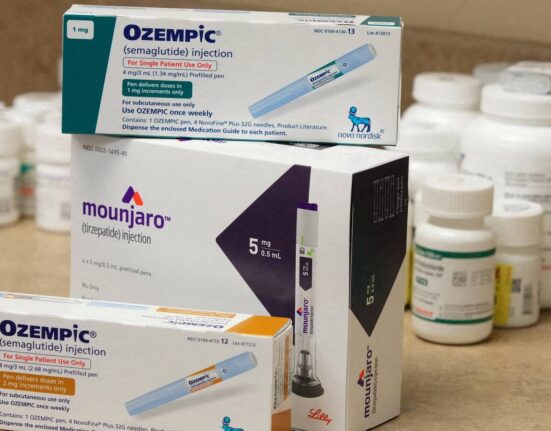People with diabetes often face a myriad of health challenges, and a recent study has shed light on a potential new concern related to the use of GLP-1 drugs. These medications, known for their effectiveness in managing blood sugar levels and aiding in weight loss, have now come under scrutiny for a possible link to an age-related eye disease that can lead to vision loss.
The research, published in JAMA Ophthalmology, uncovered that individuals taking GLP-1 drugs had a slightly elevated risk of developing neovascular age-related macular degeneration (nAMD) compared to those not using these medications. While the overall risk increase was relatively low at 0.2% among GLP-1 users versus 0.1% in non-users after one year, the implications for eye health are significant.
“Seeing such a clear signal in our study was striking,”
shared co-author Reut Shor from the University of Toronto. “The absolute risk remains low, but the advanced form of AMD is a condition with serious implications for vision and quality of life.”
Age-related macular degeneration (AMD) is a leading cause of irreversible blindness in older individuals. The emergence of neovascular AMD poses additional challenges due to abnormal blood vessel growth and damage to the central retina area called the macula. Treatment often involves frequent injections to potentially restore or stabilize vision.
The study participants were, on average, 66 years old and shared common underlying conditions like chronic heart failure and kidney disease that make them suitable candidates for GLP-1 therapy due to their diabetes diagnosis.
GLP-1 drugs have gained recognition not only for their blood sugar management properties but also for their potential benefits against cardiovascular disease, hypertension, Parkinson’s disease, and substance use disorders. However, as their usage has expanded, reports of adverse effects on eye health have surfaced.
It appears that there may be a connection between plummeting blood glucose levels triggered by GLP-1 drugs and abnormal blood vessel growth in the retina—a concerning prospect that warrants further investigation into the mechanisms at play.
While this observational study cannot establish causation definitively, it underscores the importance of closely monitoring patients on GLP-1 therapy for any signs of visual disturbances or changes indicative of early-stage AMD.
“Patients should promptly report any new visual symptoms,”
advised Shor. These symptoms could include blurred or distorted vision, wavy lines where they should appear straight, or emerging blind spots—potential indicators warranting immediate evaluation by an ophthalmologist.
Moving forward, additional research involving animal models and human tissue studies will be crucial in unraveling the precise relationship between GLP-1 drugs and heightened risks of eye diseases like nAMD. Furthermore,
“large-scale prospective clinical studies are needed,”
emphasized Shor,to clarify causality across diverse populations using these medications.
Dr. Brian VanderBeek from the Scheie Eye Institute at the University of Pennsylvania stressed
“further research is imperative”
to fully understand how GLP-1 drugs might contribute to an increased incidenceof ocular complications.He noted that while previous studies indicated lower risks initially,the latest findings raise valid concerns surrounding potential adverse ocular events associated with these widely used medications.
In conclusion,hile
“the benefits offered by GLP-1 RAs are undeniable,
prescribing physicians must remain vigilant about possible ocular side effects.”Awareness,surveillance,and timely intervention could play pivotal rolesin mitigating risksand safeguarding patients’ eyesight asthey navigate complex treatment regimensfor diabetesand other associated conditions.









Leave feedback about this